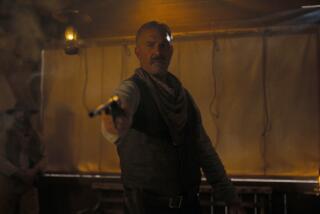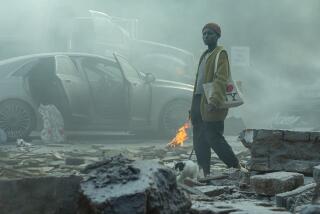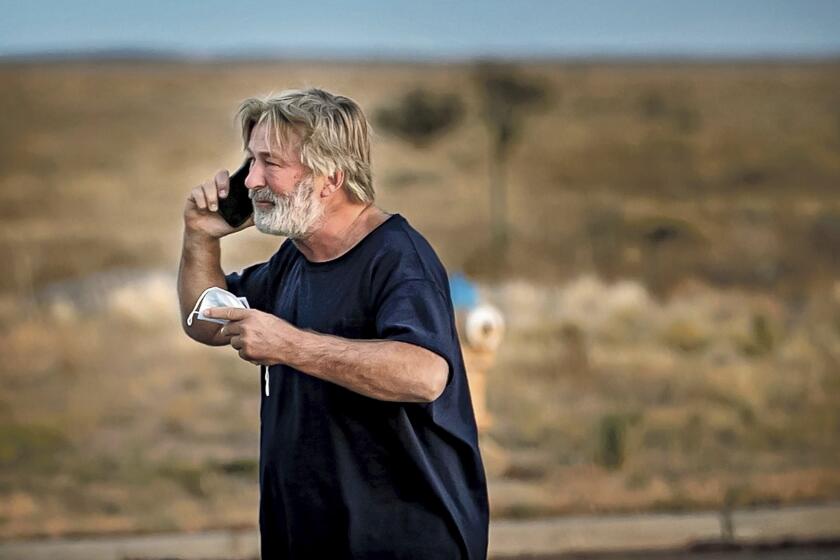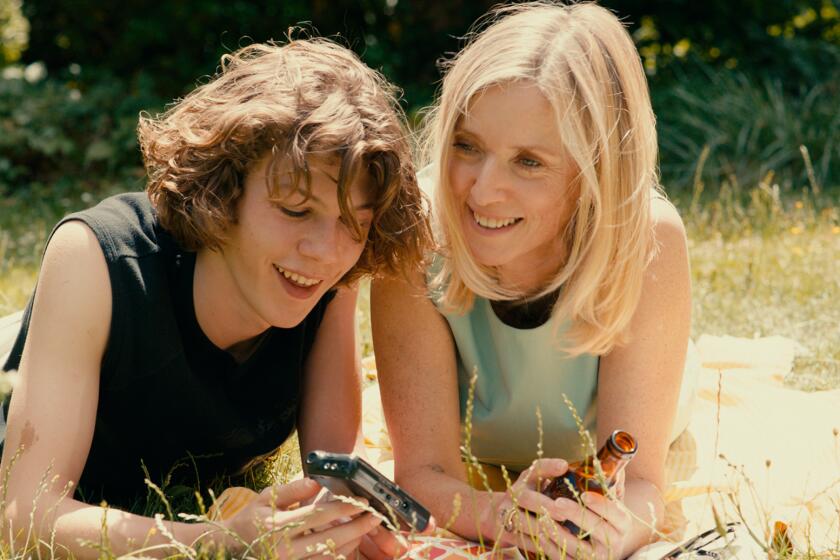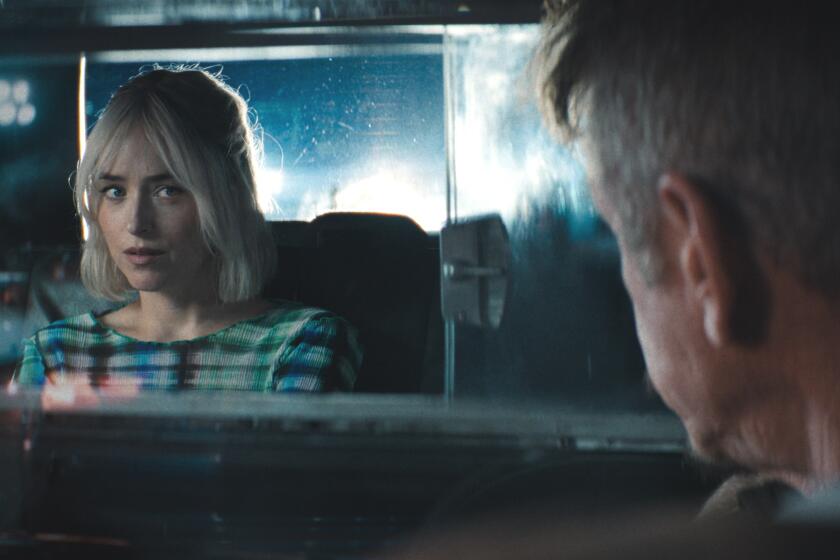The ‘Fairy Tale’ Luck of Director Luc Besson : Movies: His latest film, ‘La Femme Nikita,’ the story of a crazed addict transformed into a ruthless undercover agent, is a surprise hit.
Four years ago, French writer-director Luc Besson informed actress Anne Parillaud, newly entrenched as the woman in his life, that her career needed a shot in the arm. He wanted to write a script for her--one that would elevate her above the mindless starlet roles she had inhabited and reveal, at long last, what she could do.
What happened since, says 31-year-old Besson, is a “fairy tale.” “La Femme Nikita” went on to become the second-highest grossing film in France in 1990. It garnered nine Cesar nominations--the French equivalent of the Oscar--with Parillaud voted best actress. In Britain, it registered the highest weekly box office ever for a French film and has subsequently become a hit in Italy, Japan and the United States. (It’s currently playing in two theaters in Los Angeles and one in Newport Beach.)
“It’s very strange,” says Besson, in heavily accented English, sipping some tea at the Sunset Marquis Hotel. Dressed in a black T-shirt and jeans, he sports a pair of sunglasses, which--along with his dark beard and spiky blonde hair--give him a distinctly punk look. “My last film, ‘The Big Blue,’ was in English, starred a well-known actress (Rosanna Arquette), but didn’t work around the world. This one, made in French with no stars at all, is so big.”
“La Femme Nikita,” which has drawn comparisons with John Le Carre novels, Stanley Kubrick’s “The Clockwork Orange” and George Bernard Shaw’s “Pygmalion,” is the story of a crazed addict who, after an ill-fated drug heist, is charged with the murders of three policemen. In lieu of a life sentence, she agrees to go underground where authorities transform her into a ruthless undercover agent. Conflict arises, however, when her relationship with a grocery store clerk forces her to choose between love and duty.
One of the main draws--especially for women, Besson believes--is the presence of a female action hero: in this case, a sinewy reed of a woman who wields a gun and matches wits with the best of them. “This isn’t a woman playing like a man,” he says, “but a woman in the same situation as a man. She’s not as strong physically; she doesn’t fight like Bruce Willis. She’s more like a fox than a lion.”
Nevertheless, Besson says, the role was a stretch for the 30-year-old Parillaud. “Anne is shy, with brown glasses,” he says, “an intellectual who’d never held a weapon before. I didn’t write this part for her, but against her so people wouldn’t say she’s playing herself. When Anne read the script, she said, ‘You see me like this?’ ‘No,’ I said. ‘But you pretend to be an actress. Do it.’ ”
During the shoot, the two of them lived apart. One stayed at home with their 3 1/2-year-old daughter, Juliette, while the other camped out in a hotel. Every two weeks, they would switch. “I needed to love the character of Nikita in order to shoot,” he says, “and to come back to the same girl at night and ask her to pass the salt breaks all the magic. This way, there were no fights at night that left us angry the next day. Every morning, it was such a pleasure to see her and film her.”
Besson sniffed the sweet smell of success early on when his “Le Dernier Combat” (“The Last Combat”), released when he was in his early 20s, won 12 awards at film festivals worldwide. His second feature, the 1985 “Subway,” became a cult hit and his last film, “The Big Blue,” has been in continuous release in Paris for nearly three years.
Critics have not always taken kindly to Besson’s films, however. Some accuse him of promulgating style over substance; others of creating cinematic “comic books”--short on story and long on bright colors, hard lines, and violent action. Besson, a self-acknowledged member of the “Bugs Bunny generation,” says critics and his audience are on two different wavelengths.
“Critics want to know Nikita’s mother and father,” he says. “I tell them: ‘No . . . not in 1991.’ People who grow up in the Nuclear Age focus on the present and future, not the past. They see Nikitas all around them. They know she exists.” Besson concedes, however, that the American version of “The Big Blue” deserved its critical thrashing.
“I knew nothing about promotion in America, so I trusted this one man: (producer) Jerry Weintraub,” he says. “Then, instead of accepting the movie as it was, he tried to make it ‘Rambo Under the Sea.’ All the wrong people came to see it. Some who may have liked it never came. The American people are responsible too. That could never have happened in France. Everyone there respects movies. If anyone tries to touch a frame of one, it’s a scandal. Well, I’ve learned.”
Any common thread in his films?
Besson says with a nod: “Picasso said that we paint the same painting all our lives and he’s right. I keep doing the same movie: someone who is prevented from being what he wants to be or ‘making it’ by the society around him.
“I always felt much closer to nature than to people. My next film, ‘Atlantis,’ a sequel to ‘The Big Blue’ . . . has no people in it, at all. No men or women. Just fish and mermaids. Making films, for me, has always been a way to escape. I create another life and believe in it.”
More to Read
Only good movies
Get the Indie Focus newsletter, Mark Olsen's weekly guide to the world of cinema.
You may occasionally receive promotional content from the Los Angeles Times.
